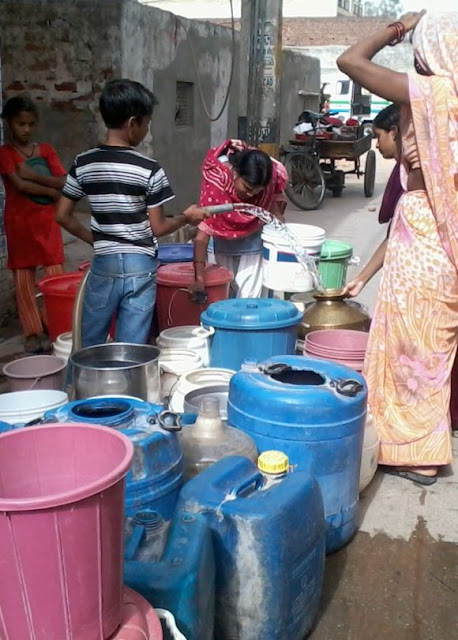Priyanka in New Delhi
An audit report of the Delhi Jal Board states that failure in
timely construction of underground reservoirs and booster pumping
stations has resulted in an unequal distribution of water. Priyanka
reports
In his mid 70s, Dhanpal
watches over a child with a water pipe in his hands. A dozen people
carrying plastic containers of all sizes crowd around him waiting
anxiously for their turn to fill up.
Water is a scare commodity
for these residents of Sangam Vihar, probably the biggest segregation
of unauthorised houses in Delhi.
The past few weeks have
witnessed an unprecedented hue and cry about water shortage in the
capital. While residents, mainly in the southern and northern parts of
Delhi, have complained of an acute shortage in water supply, this
scarcity has not been evenly experienced by all residents across.
Dhanpal,
a driver, owns some 50-odd rooms in gali no.1 of Sangam Vihar. His
eight brothers, who are all residents of the same gali, also own rooms
that are rent out to a family of three-four members. Most of these
tenants work as vendors and laborers in adjoining Govindpuri and
Kalkaji.
Dhanpal pays Rs 5,000 to a private contractor for two hours of uninterrupted water supply.
"Each
one of them (his tenants) will store around 700 to 800 liters of water,
which will be used for the next 4-5 days," Dhanpal explains. "There is
no water here, we are hit by hard times," he says.

No comments:
Post a Comment